Year 1
The proficiency strands understanding, fluency, problem-solving and reasoning are an integral part of mathematics content across the three content strands: number and algebra, measurement and geometry, and statistics and probability. The proficiencies reinforce the significance of working mathematically within the content and describe how the content is explored or developed. They provide the language to build in the developmental aspects of the learning of mathematics. The achievement standards reflect the content and encompass the proficiencies.
At this year level:
- understanding includes connecting names, numerals and quantities, and partitioning numbers in various ways
- fluency includes readily counting number in sequences forwards and backwards, locating numbers on a line and naming the days of the week
- problem-solving includes using materials to model authentic problems, giving and receiving directions to unfamiliar places, using familiar counting sequences to solve unfamiliar problems and discussing the reasonableness of the answer
- reasoning includes explaining direct and indirect comparisons of length using uniform informal units, justifying representations of data and explaining patterns that have been created.
(source: www.australiancurriculum.edu.au)
Achievement Standard
By the end of Year 1, students describe number sequences resulting from skip counting by 2s, 5s and 10s. They identify representations of one half. They recognise Australian coins according to their value. Students explain time durations. They describe two-dimensional shapes and three-dimensional objects. Students describe data displays.
Students count to and from 100 and locate numbers on a number line. They carry out simple additions and subtractions using counting strategies. They partition numbers using place value. They continue simple patterns involving numbers and objects. Students order objects based on lengths and capacities using informal units. They tell time to the half-hour. They use the language of direction to move from place to place. Students classify outcomes of simple familiar events. They collect data by asking questions, draw simple data displays and make simple inferences.
(source: www.australiancurriculum.edu.au)
- Plus Plan
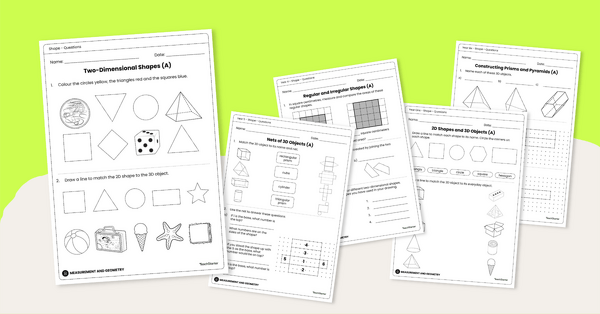
Shape Worksheet Sets (Foundation to Grade 6 Level)
Use these levelled worksheets sets with your primary school students to explore 2D shapes and 3D objects!
- Plus Plan
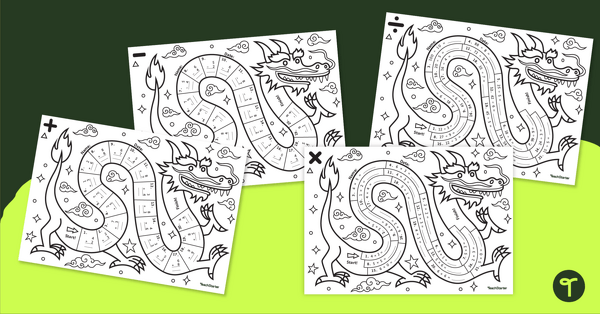
Dominate the Dragon – Mental Maths Worksheets
Capture your students' interest in maths drills for all four operations with these fun dragon-themed differentiated maths worksheets.
- Plus Plan
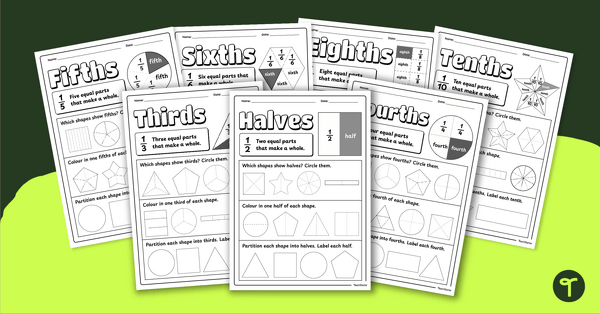
Introduction to Unit Fractions Worksheet Pack
Introduce your students to unit fractions with this set of teacher-created worksheets.
- Plus Plan
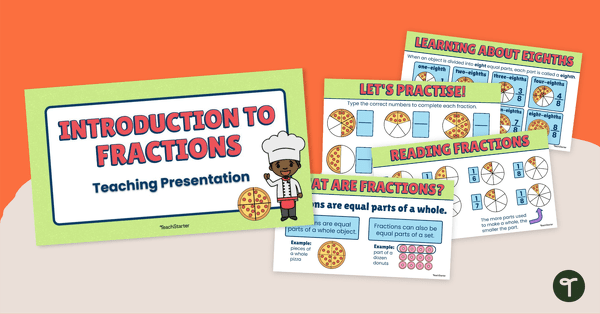
Introduction to Fractions – Interactive Teaching Presentation
Use this teaching presentation to teach your students how to identify the parts of a fraction, determine equal and unequal parts and use numerators and denominators to write fractions.
- Plus Plan
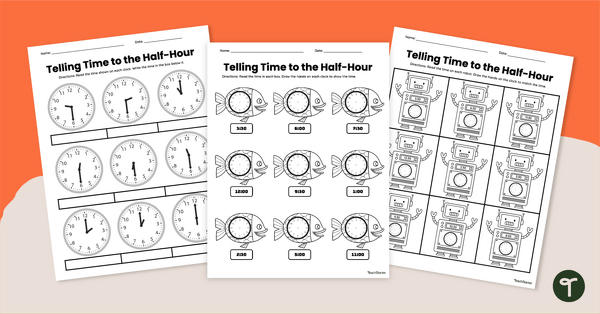
Analogue Time to the Half Hour – Worksheets
Practise telling time to the half-hour with a fun set of printable Telling Time Worksheets for Grade 1.
- Free Plan
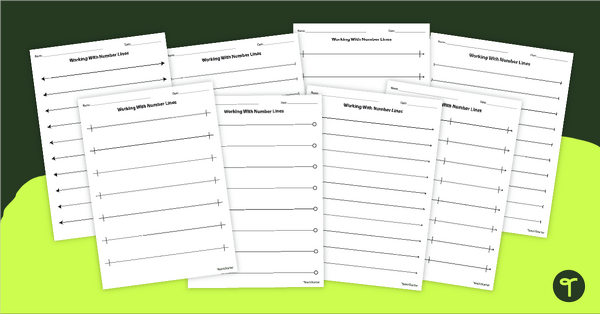
Blank Number Lines - Printable
Print a set of open number lines to help you teach a variety of maths skills.
- Plus Plan
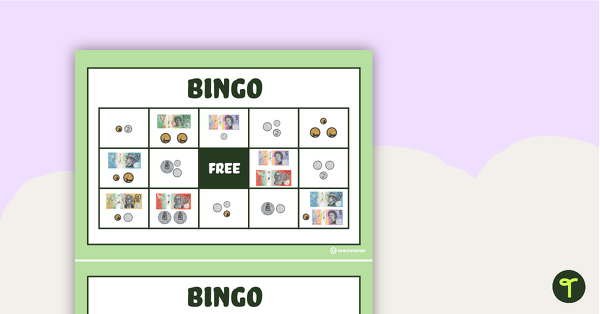
Money Bingo – Australian Currency
32 different bingo cards using notes and coins.
- Plus Plan
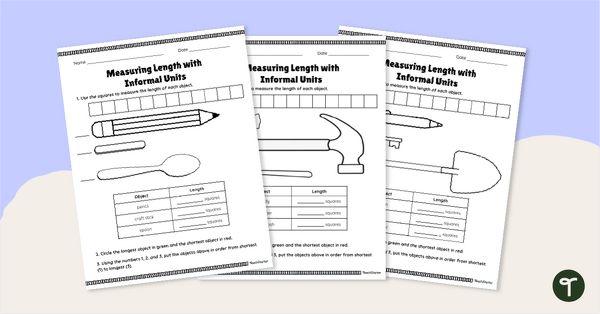
Measuring Length with Informal Units Worksheets
A worksheet to use when learning about measuring length using informal units.
- Plus Plan
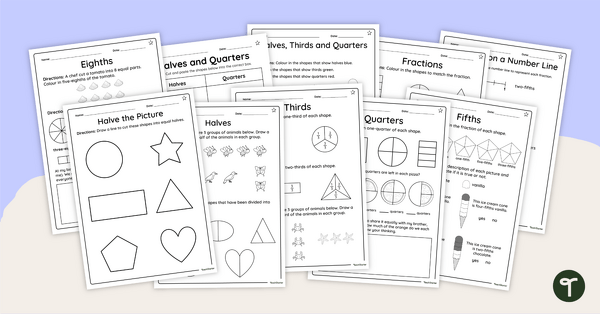
Fractions Worksheet Pack – Differentiated
Practise partitioning shapes, shading in fraction models, representing fractions on a number line and more with this set of differentiated worksheets.
- Free Plan
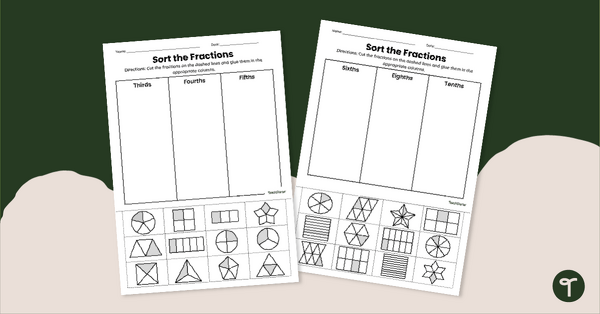
Sorting Unit Fractions Cut and Paste
Sort different unit fraction visualisations with these cut-and-paste unit fraction worksheets.
- Free Plan
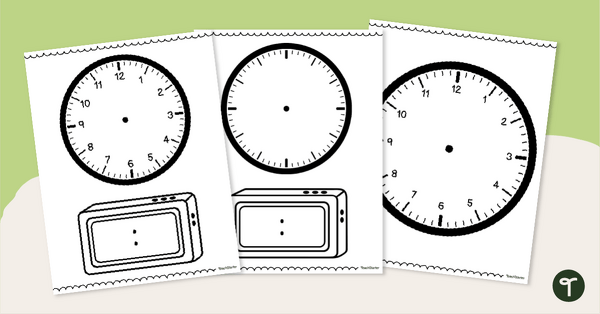
Blank Digital and Analogue Clock Templates
Practise writing the time in digital and analogue form with this set of blank clock faces.
- Plus Plan

Telling the Time Poster
Help your students learn to tell the time to the hour, half-hour, quarter, and minute with a printable Telling the Time anchor chart PDF.
- Plus Plan
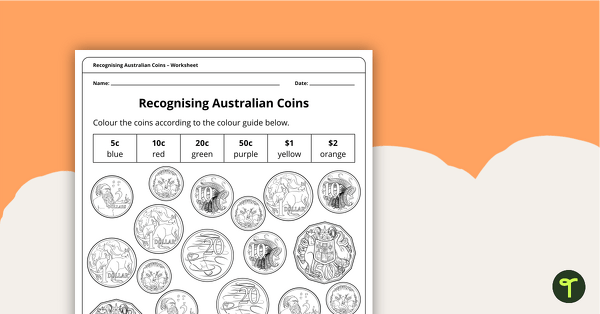
Recognising Australian Coins – Worksheet
Explore Australian coins with this simple worksheet.
- Plus Plan
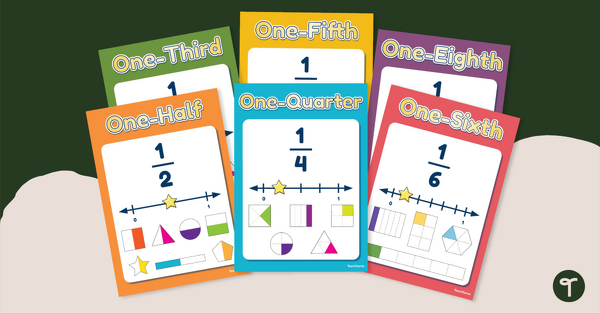
Unit Fractions – Poster Pack
Display unit fraction models with this set of 6 classroom posters.
- Plus Plan
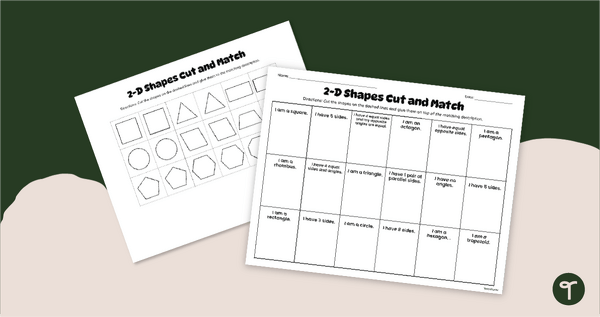
2D Shape Match
A fun match-up activity to consolidate your students’ knowledge of 2D shapes and their properties.
- Plus Plan
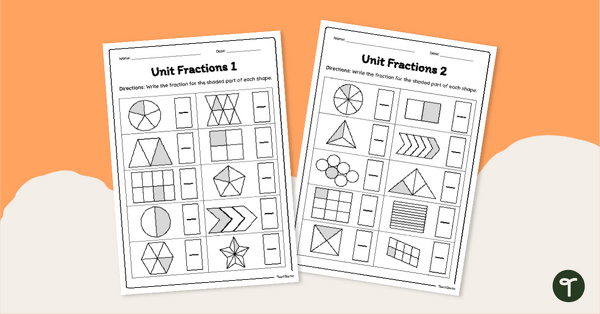
Label the Unit Fraction Worksheets
Label different unit fractions with this set of student worksheets.
- Plus Plan
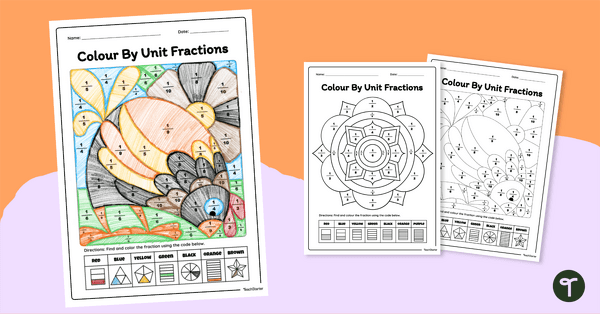
Unit Fraction Colouring Sheet
Crack the colour code and practise unit fractions all while colouring in fun images.
- Free Plan
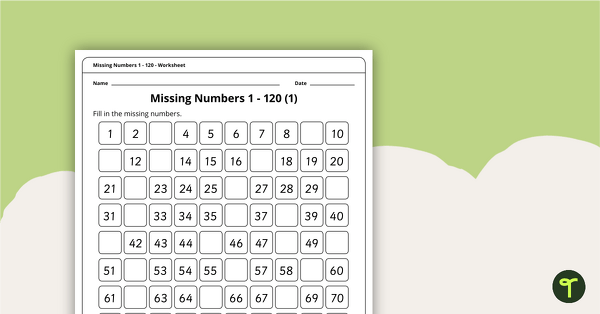
1–120 Number Charts With Missing Numbers
A set of 5 worksheets with missing numbers from 1–120.
- Plus Plan
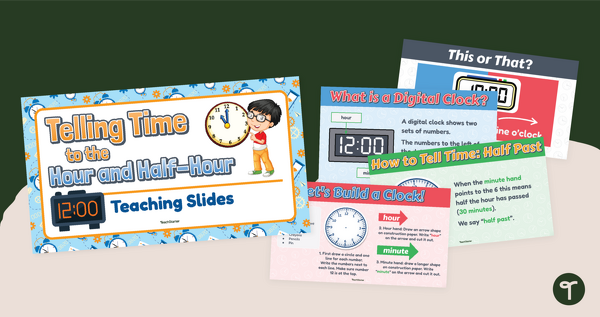
Telling Time to the Hour and Half Hour Teaching Slides
Teach how to tell time to the hour and half hour with an interactive teaching slide deck.
- Plus Plan
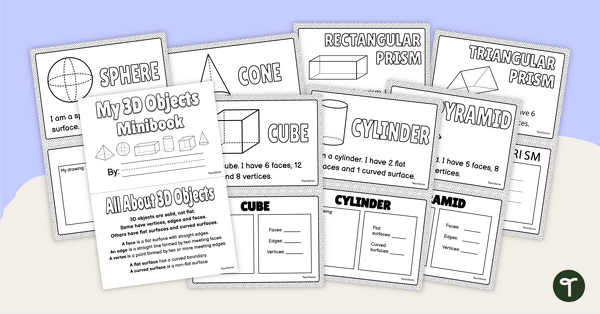
My 3D Object Mini-Book
Explore the properties of some common three-dimensional objects with this printable mini-book.
- Plus Plan
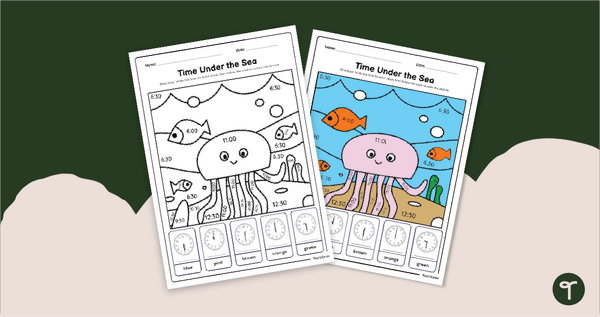
Telling Time - Year 1 Maths Colouring Sheet
Practise telling time to the hour and half hour with a fun Telling Time Colour By Code maths worksheet!
- Plus Plan
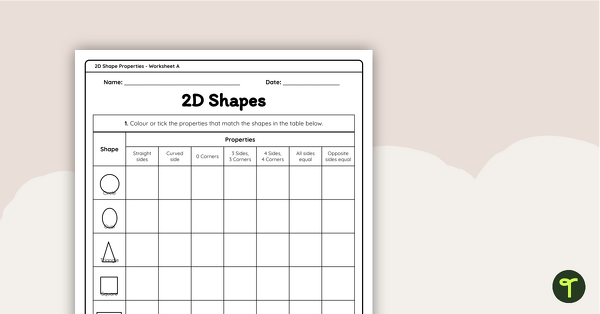
2D Shapes Comparison Worksheet
A set of two 2D shape worksheets for students to record their observations whilst comparing properties of 2D shapes.
- Plus Plan
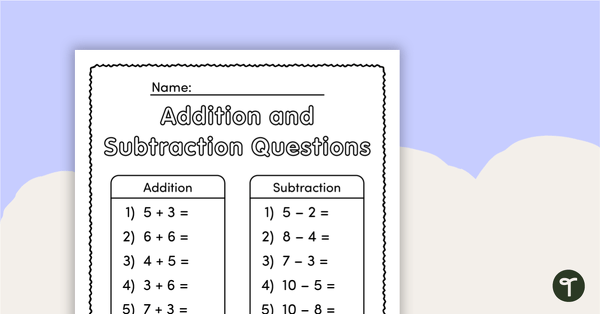
Simple Addition and Subtraction Questions
Use this versatile worksheet with your students when exploring early addition and subtraction number sentences.
- Free Plan
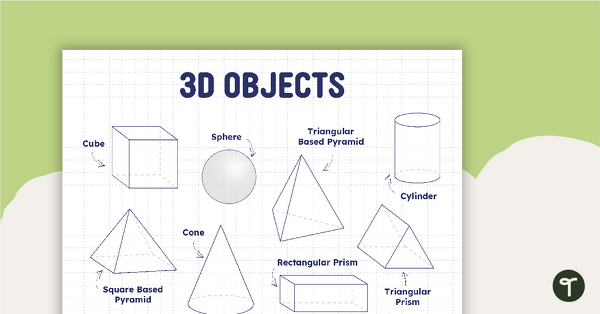
3D Objects Poster
Learn the names of some common 3D shapes with this classroom poster.
- Free Plan
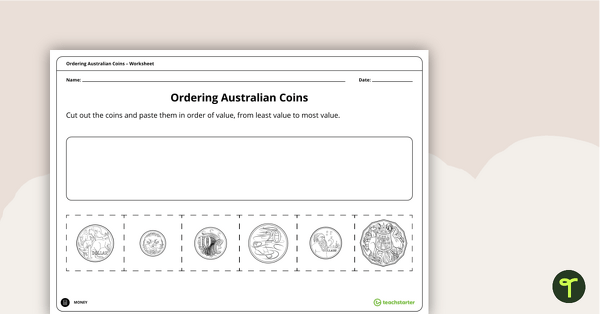
Ordering Australian Coins – Worksheet
A worksheet for students to practise ordering Australian coins.
- Plus Plan
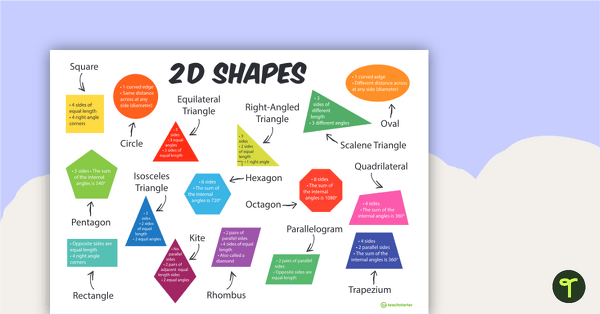
2D Shapes with Information – Poster
A 2D shapes poster with 16 common shapes, as well as information characterising each shape.
- Plus Plan
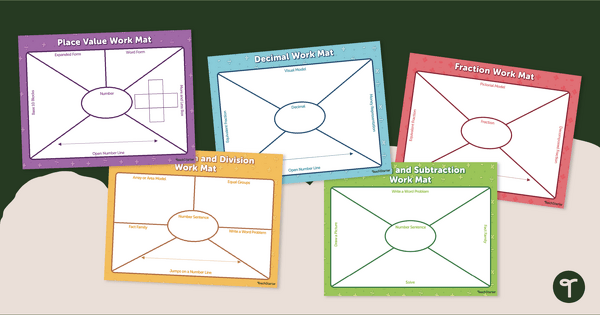
Printable Maths Mats - Graphic Organisers
Practice working on specific math concepts with our set of 5 printable math graphic organisers.
- Plus Plan
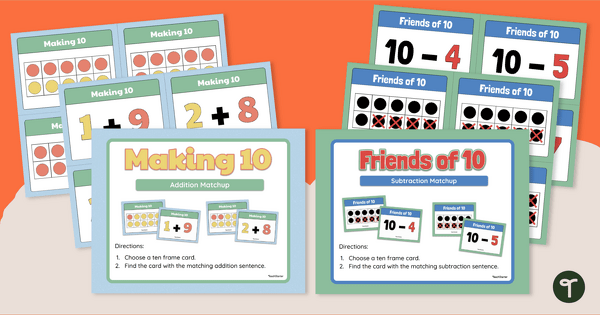
Tens Frame - Addition and Subtraction Match-Up Activity
Build addition and subtraction skills with two tens frame matching games.
- Plus Plan
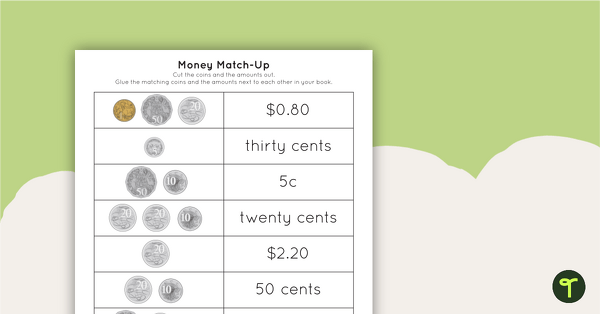
Money Match-Up Activity (Australian Currency)
An activity to help students recognise Australian coins and their combined amounts.
- Plus Plan
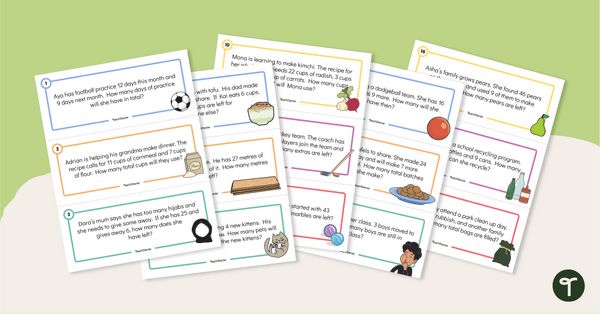
Addition and Subtraction Word Problem Task Cards (Numbers 1-50)
Use a range of addition and subtraction strategies to solve twenty word problems that contain numbers 1–50.
- Plus Plan
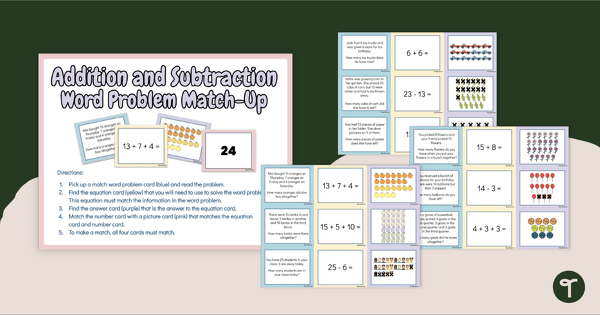
Addition and Subtraction Word Problems - Match Game
Practise reading, modelling, and solving addition and subtraction word problems with a matching activity.
- Plus Plan

Properties of 3D Objects - Poster Set
Help your students identify the names and properties of common 3D objects with this set of five classroom posters.